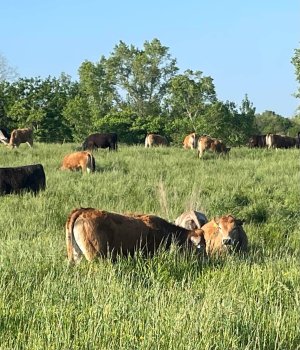dave_shelby
Well-known member
I did a stream exclusion program 18 months back through Lord Fairfax SWCD. This was all well and good except the cattle cannot get to water to cool off from fescue. They end up creating mud pits for themselves and look like pigs. Its worse yet because we rotationally graze, moving every 3 days (and in spring every 1-2 days) so the mud pits are multiplying.
The pastures are mainly fescue with some orchard grass, clover, chicory, plantain and other forbs. I frost seeded clover in last winter in the places where its thin but its too early to see any impact. The worst offenders are going to get culled and I am slowly moving to Red Angus and South Poll.
So I need some more immediate advice. I see there are a number of minerals that are advertised to diminish the impact of fescue. Do they work and are they worth it? Cargills Fescue EMT is running 45 dollars a bag - 3x the price of high mag. Anything else that can be done?
The pastures are mainly fescue with some orchard grass, clover, chicory, plantain and other forbs. I frost seeded clover in last winter in the places where its thin but its too early to see any impact. The worst offenders are going to get culled and I am slowly moving to Red Angus and South Poll.
So I need some more immediate advice. I see there are a number of minerals that are advertised to diminish the impact of fescue. Do they work and are they worth it? Cargills Fescue EMT is running 45 dollars a bag - 3x the price of high mag. Anything else that can be done?

